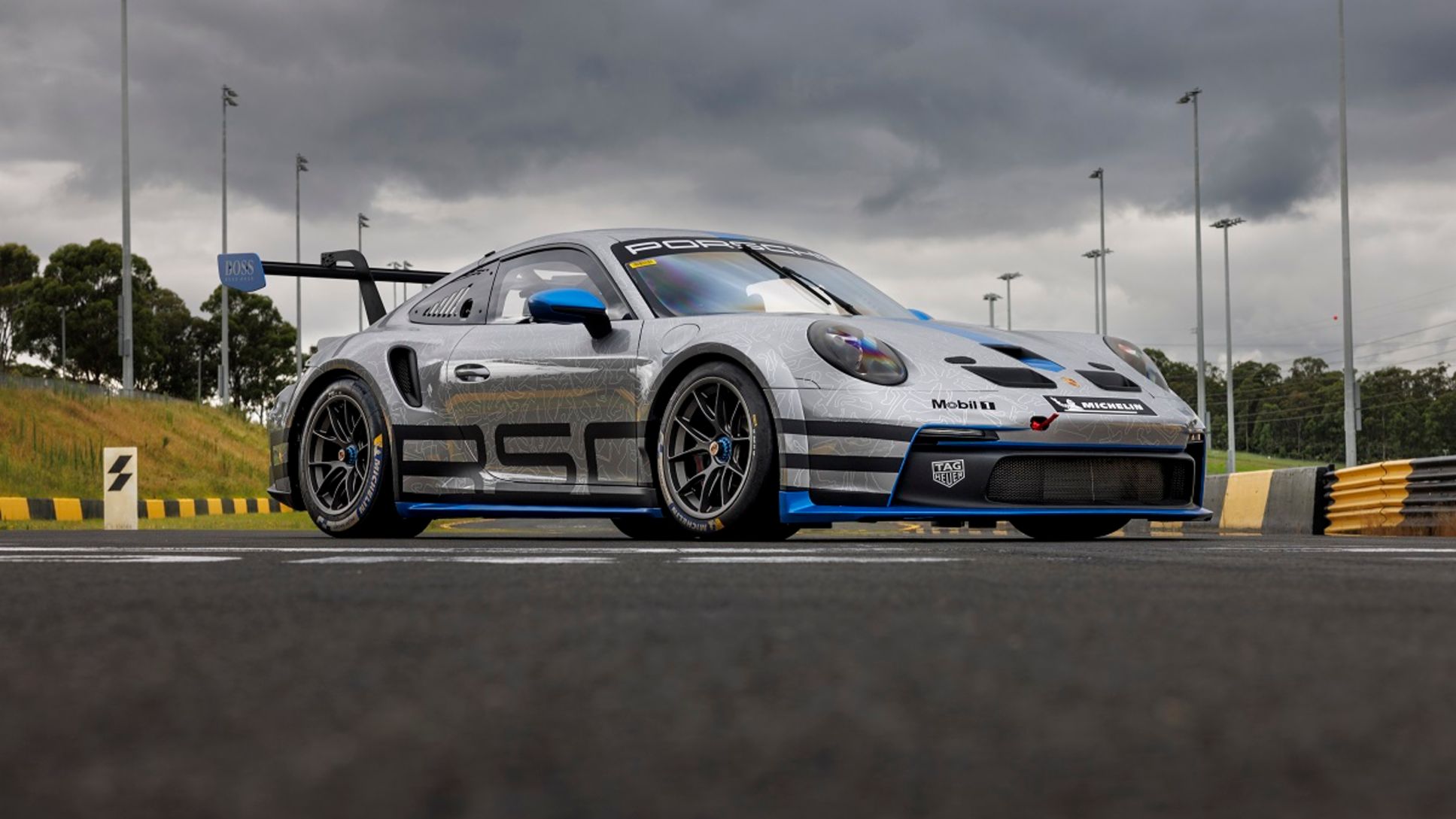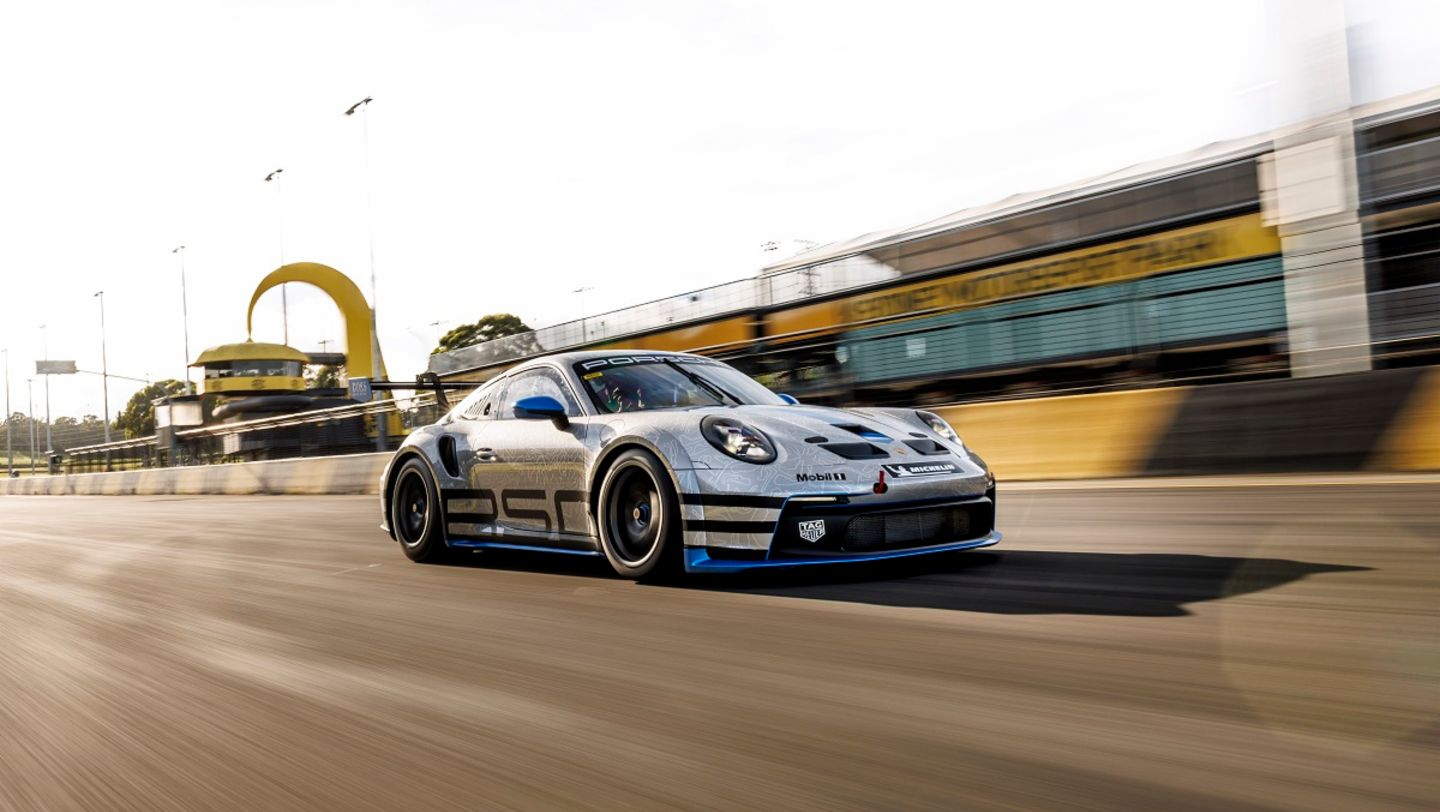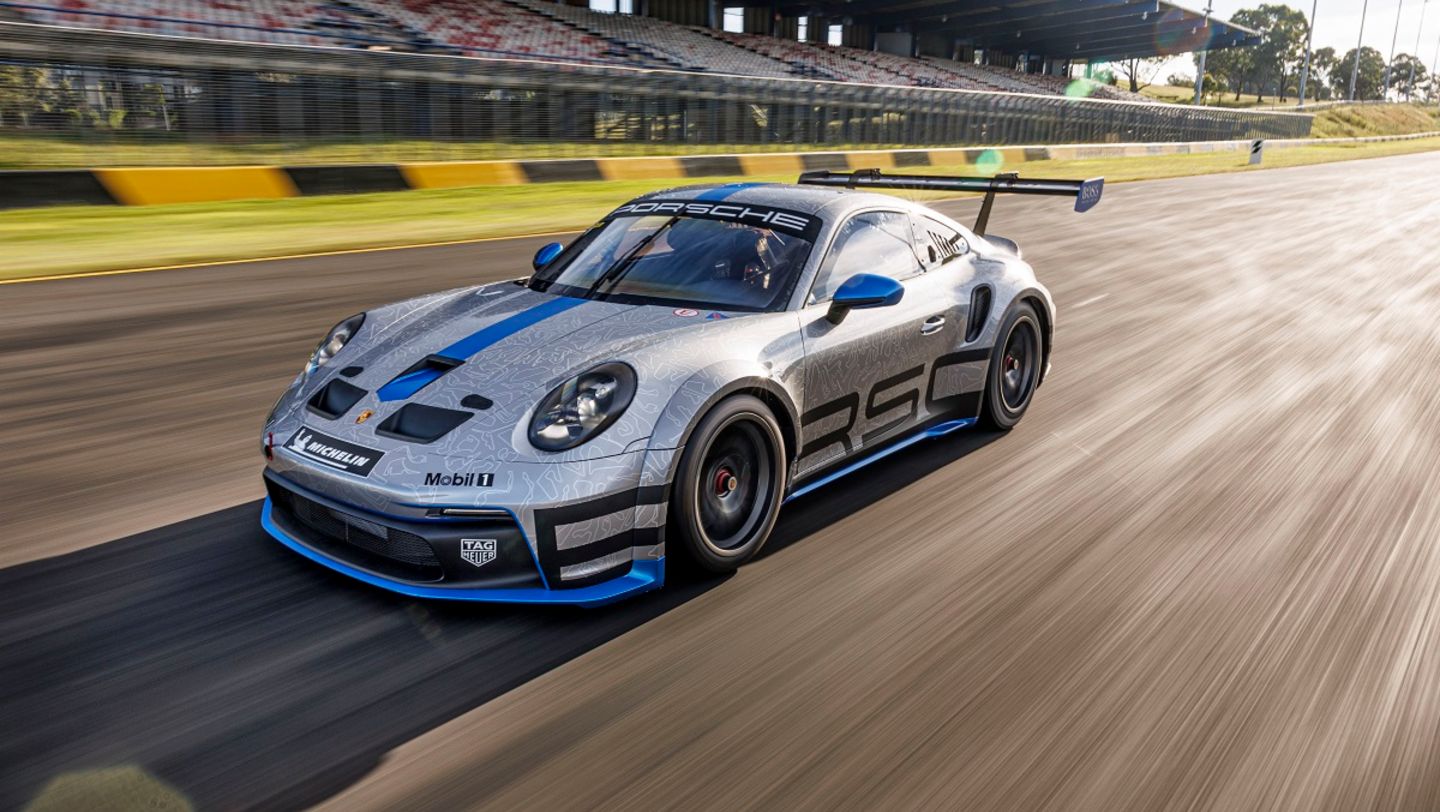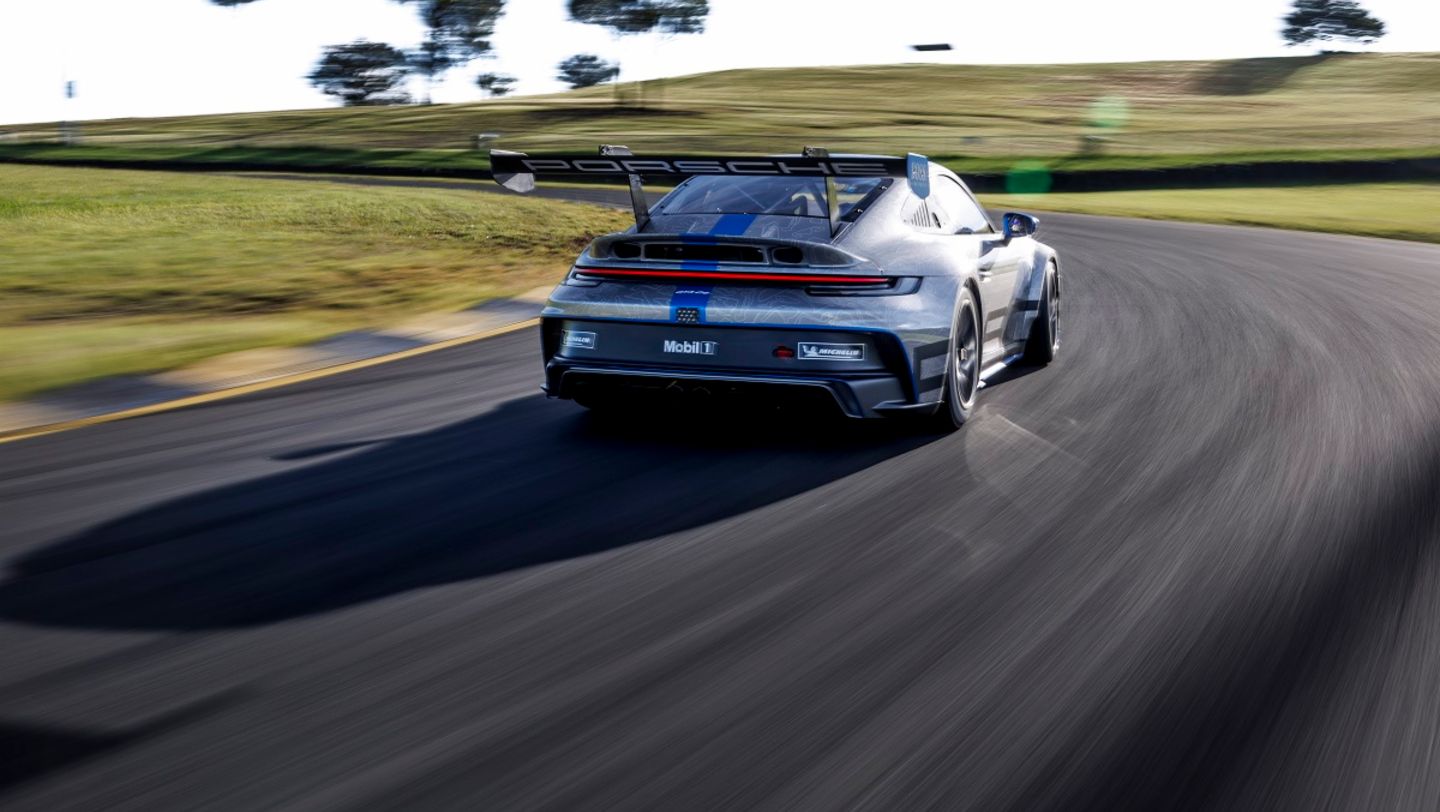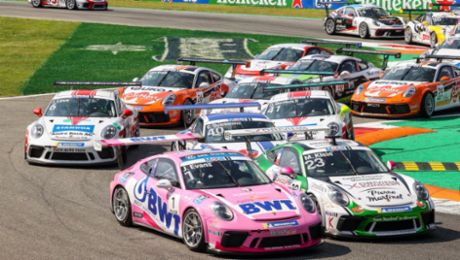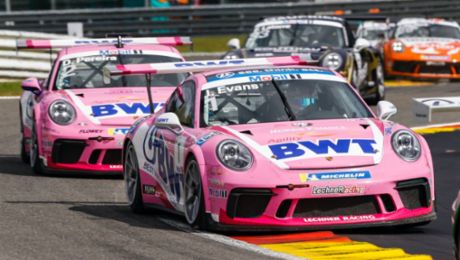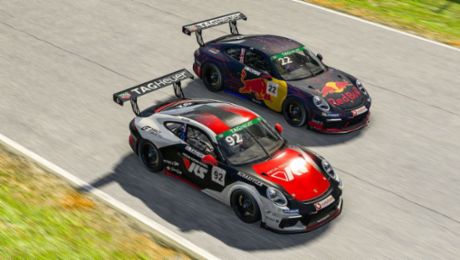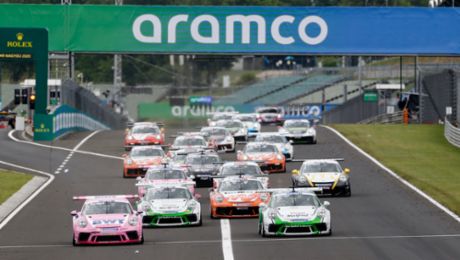Porsche’s new 992-generation 911 GT3 Cup car debuted in several Carrera Cup Championships around the world last year, including North America for the first time.
This high-performance customer racer is making its Australian competition debut this year, alongside another new leader: Barry Hay, Porsche Cars Australia’s new Motorsport Manager. Hay, hugely experienced in top-level Australian motor racing, arrived at Porsche in February, ahead of what has become the biggest season in Carrera Cup Australia’s history.
The new 911 GT3 Cup (Type 992) has brought with it the hopes of local teams and drivers – and a slew of fascinating statistics and facts. Here are some of them.
It had an intense development program: The groundwork for this new model was laid in 2018. Concrete vehicle development began in early 2019.
It’s built alongside its showroom siblings: Like its predecessor, the new 911 GT3 Cup racer rolls off Porsche’s production line in Stuttgart-Zuffenhausen, alongside 911 road-car models destined for Porsche showrooms.
It has more power: The new 911 GT3 Cup has a peak power level of 375 kW / 510 PS, about 25 PS more than the model it replaces. In fact, its peak power level is the same as the new 911 GT3 road car, the lap-record-setting showroom model Porsche Motorsport helped develop.
The engine is durable and low-maintenance: Despite the punishment of door-to-door racing, the new 911 GT3 Cup’s engine only needs a maintenance check after 100 hours of track time. It’s only one example of the engineering quality underpinning these racing cars.
The gearbox is just as durable and low-maintenance: This needs a “minor inspection” after 60 hours of racing – which corresponds to roughly two years in the overseas Porsche Mobil 1 Supercup. A major overhaul is due after 120 hours of racing.
This is the first 911 GT3 Cup racer to have a ‘turbo’ body: The new 911 GT3 Cup is the first one-make Cup racer from Porsche to feature the company’s famed wide turbo-spec body.
The rear spoiler resembles a swan: The new 911 GT3 Cup has improved aerodynamics, thanks in part to its 11-stage adjustable rear spoiler, which now has a ‘swan neck’ mounting. With this design, the wing surface is no longer fitted on top of its strut mounts but instead underneath them. This unique layout ensures uninterrupted under-wing airflow and more stable handling, especially in faster corners.
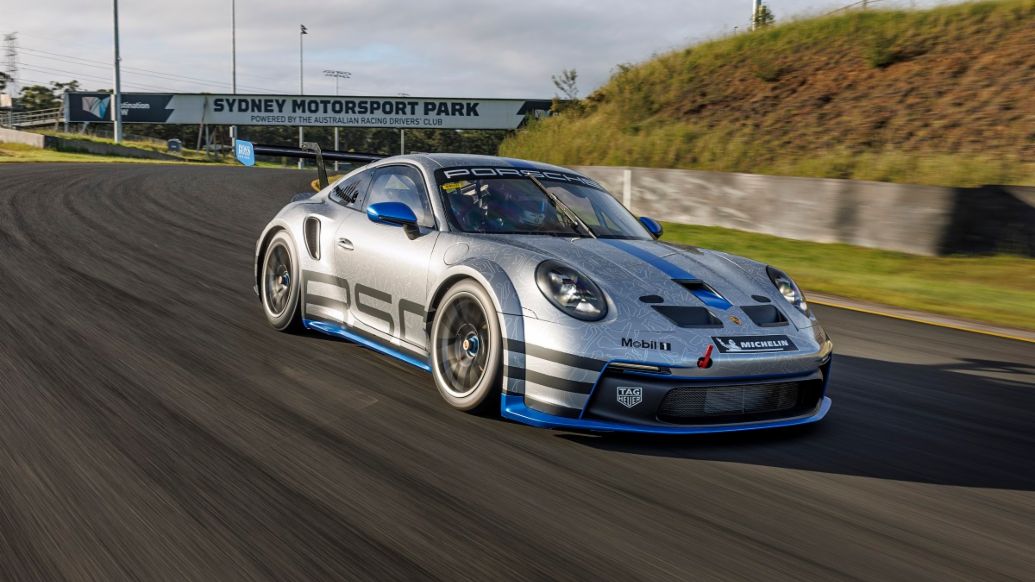
It's a light-weight athlete: The new 911 GT3 Cup has an impressively low 1,260-kilogram weight, despite being 35 kilograms heavier than its predecessor – due, in part, to the extra struts fitted to the safety cell.
It makes clever use of materials: The doors, engine hood and rear wing are made of carbon-fibre reinforced plastic (CFRP). But the front bonnet with its unique exit-air duct and central air intake is, like in the road-going 911 Carrera, made of aluminium – which lowers repair costs in the case of an accident.
Its windows aren’t made of glass: For safety and lighter weight, all windows in the 911 GT3 Cup are made of lightweight polycarbonate and have a scratch-resistant hard-coat glazing.
It has an escape hatch: For maximum driver safety, there is a removable escape hatch in the roof, which complies with the latest FIA standards.

It’s adjustable for drivers: Unlike many racing cars, the new 992-generation 911 GT3 Cup has three-way seat adjustment (incline angle and two height settings) and an adjustable steering column. These help ensure an optimum fit for drivers of all physical statures. What’s more, the seats can be adjusted even further with a range of padding thicknesses.
The electronics have moved: The Motorsport control units and data loggers have been relocated from the passenger footwell to the right-rear compartment in the new 911 GT3 Cup. This makes space for a passenger seat to be installed from time to time (for ‘taxi rides’).
It no longer has hydraulic power steering: It now uses electro-mechanical power steering, which removes the need for a hydraulic steering pump and its associated plumbing lines.
The brake pads can be changed even faster: Thanks to this new car’s special brake callipers.
It does not use electric fuses: The onboard electrical system functions without actual plug fuses, reducing the amount of materials used in the wiring harness and saving weight.
The new 911 GT3 Cup racer rolls off Porsche’s production line in Stuttgart-Zuffenhausen, alongside 911 road-car models.
The hazard lights operate automatically: If the engine stalls on the grid at the start of a race, the hazard warning lights switch on automatically to warn other competitors of possible danger.
It leaves the factory ready to race: Porsche Cars Australia delivers the new 911 GT3 Cup to customers with a complete accessory kit that includes, for example, all special tools and wishbone spacers required for track adjustment. Teams don’t need to buy these parts separately.
This new model is 3 seconds faster: This was the drop in lap times achieved by this new 911 GT3 Cup at most European circuits last year. In a sport where a thousandth of a second can determine victory, 3 seconds is widely regarded as ‘an eternity’.
The 911 Cup range has turned 30: The very first 911 Cup racer was the 964-generation version, which was launched in 1990. Three decades later, this new Type 992 model was unveiled, marking the milestone.
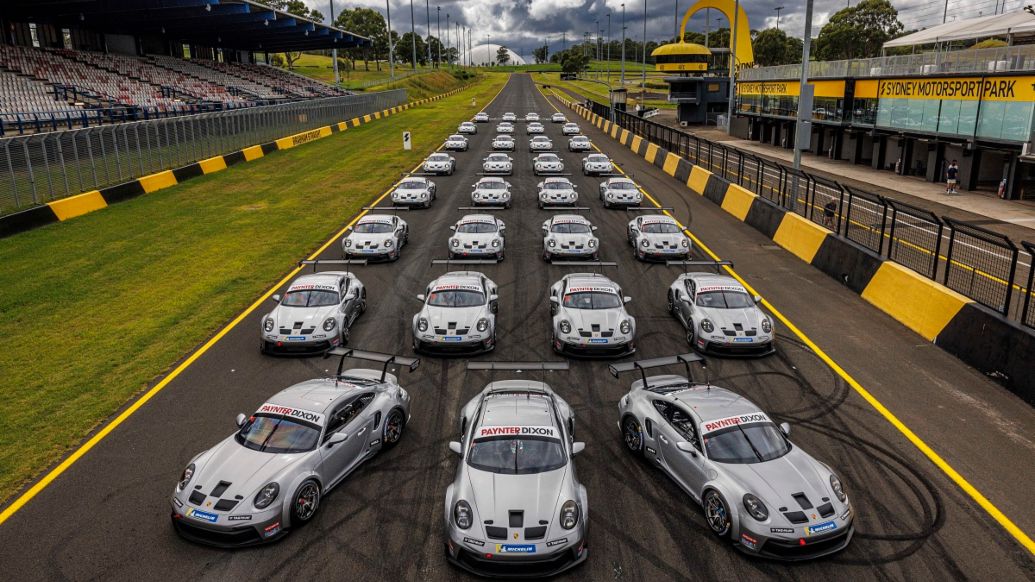
The first round of the 2022 Porsche Paynter Dixon Carrera Cup Australia is at the Formula 1® Australian Grand Prix, from 7-10 April.
